Prof. Erdoğan Ergün plays an active role in shaping the artistic and academic direction of Near East University. As Advisor to the Rector and Vice Dean of the Faculty of Fine Arts and Design, he contributes to both the university’s strategic vision and its day-to-day creative life. His work spans from studio practice and printmaking to exhibition curation and museum development, always grounded in a thoughtful approach to visual culture and education.
In this interview, he shares his thoughts on the dialogue between art and academia, the value of hands-on learning, and the ideas that continue to shape his artistic journey.
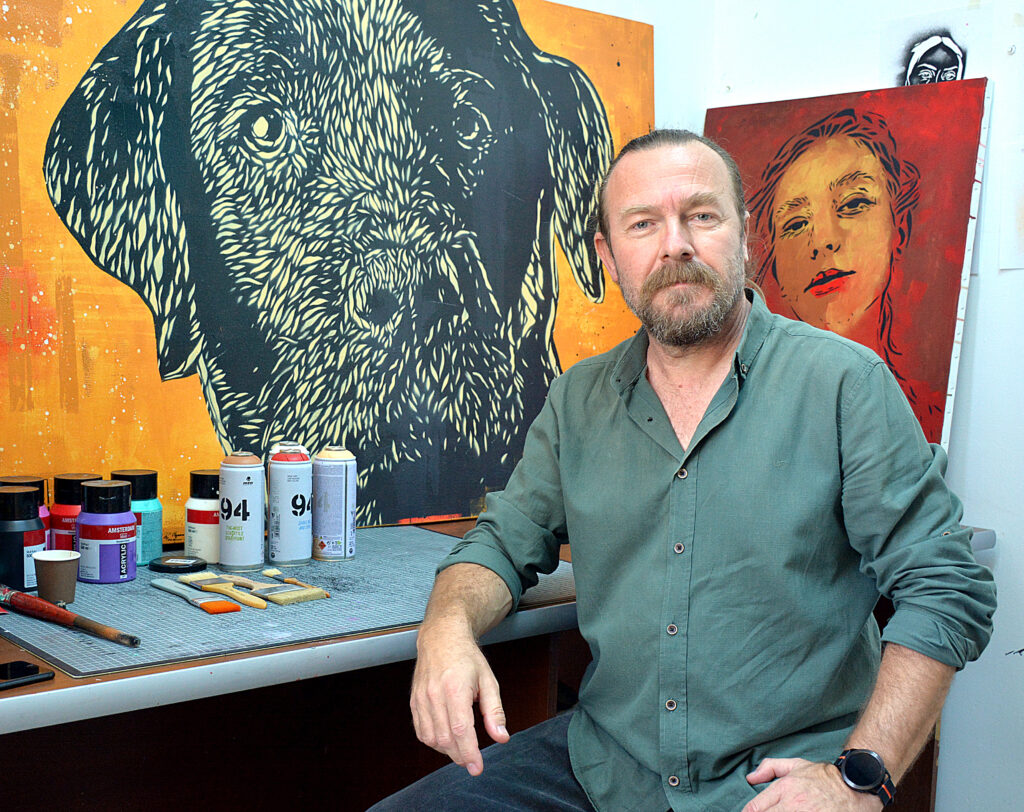
When and how did art become a form of expression for you? How did this journey begin?
I started my art education in 1991 at Hacettepe University, Faculty of Fine Arts, Department of Graphic Arts. I took courses from many esteemed artists and academics. Within the field of Graphic Arts, I focused on printmaking by using original printing techniques. During this process, I continued my artistic production using one of the subfields of printmaking—Stencil technique. Stencil can be defined as a template created by cutting designs onto the surface of paper, cardboard, acetate, or similar materials using a craft knife or scalpel. The process of creating the stencil—cutting and carving—takes time, but its application with spray paint is very quick. This technique is particularly associated with street art. In public spaces, artists can quickly apply their work to walls. Therefore, when there is a need to express social realities or when the artist desires to look at the world differently through an aesthetic experience, it becomes an effective artistic expression.
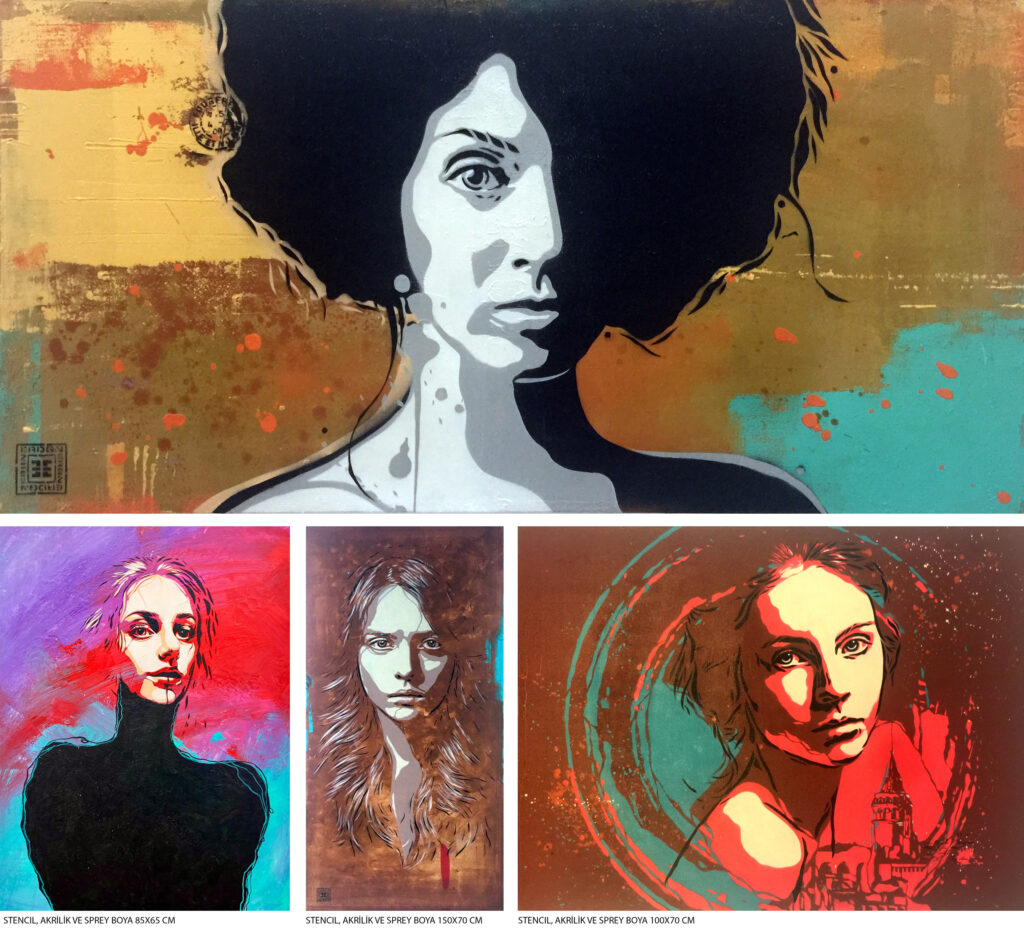
1. Erdoğan Ergün, Stencil, 150×70 cm, acyrilic and apray on canvas, 2018; 2. Erdoğan Ergün, Stencil, 65×85 cm, acyrilic and apray on canvas, 2025; 3. Erdoğan Ergün, Stencil, 70×150 cm, acyrilic and apray on canvas, 2018; 4. Erdoğan Ergün, Stencil, 100×70 cm, acyrilic and apray on canvas, 2017
“Stencil is not just a technique for me but also a form of intervention and a political attitude.”
Using stencils is both a technical preference and a strategic choice for me. As someone who has been working with the stencil technique for 15 years, my production practice is positioned within the tradition of street art. However, I also use this technique on canvas, thus transferring my production to different contexts. The canvas provides a more controlled surface and the opportunity to create deeper layers. At the center of my work lie representations of women, gender roles, and the presence of women in public spaces. The figures I create with stencils sometimes represent a strong stance, and at other times a silent rebellion. Through visual metaphors, I aim to establish a critical dialogue with the viewer. In this context, stencil is not just a technique for me but also a form of intervention and a political attitude.
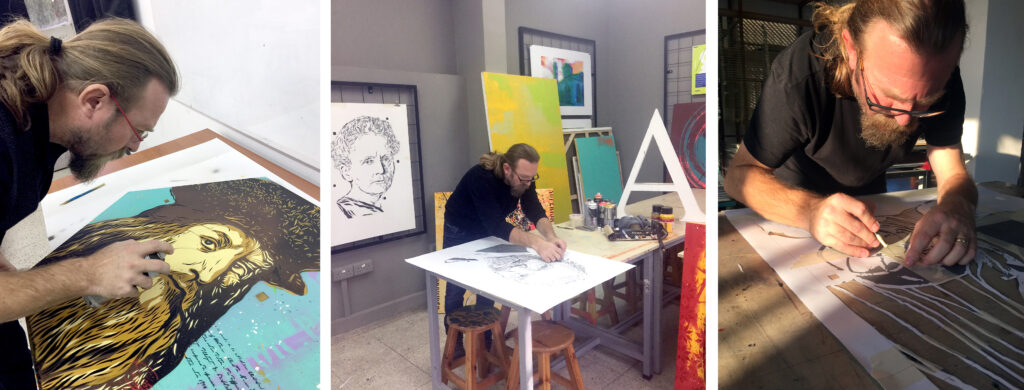
How do your academic identity and artistic production interact with each other? How does one feed into the other?
There is a multifaceted and dynamic relationship between my academic identity and artistic production. Especially theoretical research provides me with an intellectual structure, a discipline of inquiry, and a conceptual foundation in my artistic production. Therefore, I believe that my research in areas such as art analysis, art history, intellectual history, philosophy, sociology, psychology, and even recently in the field of health, strengthens the intellectual infrastructure behind my work. As a result, academic research forms the invisible foundation of art for me. My artistic production, on the other hand, is a living, emotional, and experiential structure built upon it. They both nourish and question each other.
However, sometimes during the production process in the studio, I find that a figure, a color, a void, or a stain expresses something better than what an academic text could say. Furthermore, while producing in the studio, my students witness this process firsthand. In this way, they can observe the intellectual and practical transformations at every stage of production. This experience provides them not only with technical knowledge but also with inspiration and courage that nourish their creativity. From this perspective, artistic and academic work are for me like two companions who support each other, sometimes clash, but always nourish each other—sometimes obedient, sometimes resistant.
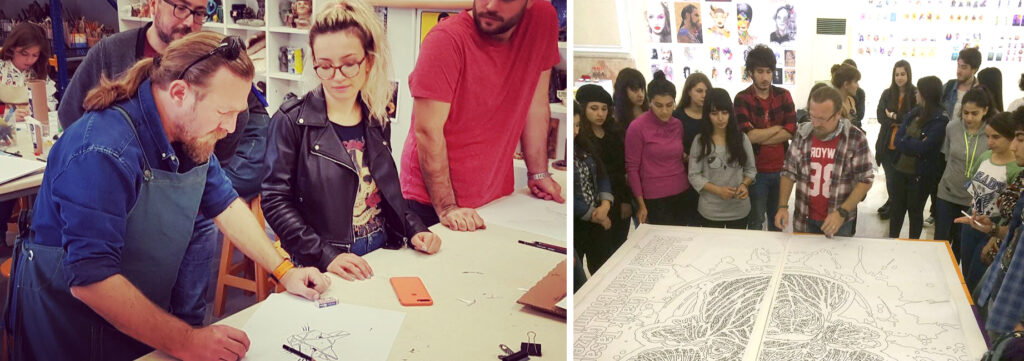
Which art movements, artists, or cultural references have most influenced you?
In my artistic productions, I have always focused on the relationship between form, color, motif, figure, and the sharp and curved lines that shape the plastic language. The elegant and sharp curves of the Art Nouveau movement inspired by nature, the rhythm of its motifs, its female figures and portraits, have been significant aesthetic references in my search for material and form. Artists such as Alphonse Mucha and Gustav Klimt, with their sensitive and holistic design approach to natural forms, have deeply influenced me. The movement’s

ambition to connect art with life—its desire to integrate art into everyday life through architecture, graphic design, stained glass, and textiles—resonates with my approach to artistic production. Moreover, the cultural emphasis Art Nouveau places on craftsmanship and its stance against industrial standardization have made me appreciate this movement both aesthetically and intellectually.

“The stencil technique I use in my work is directly linked to the Pop Art movement.”
In addition, the stencil technique I use in my work is directly linked to the Pop Art movement. I believe that the relationships I often build with visual culture and the language of everyday objects have significantly influenced my artistic practice.
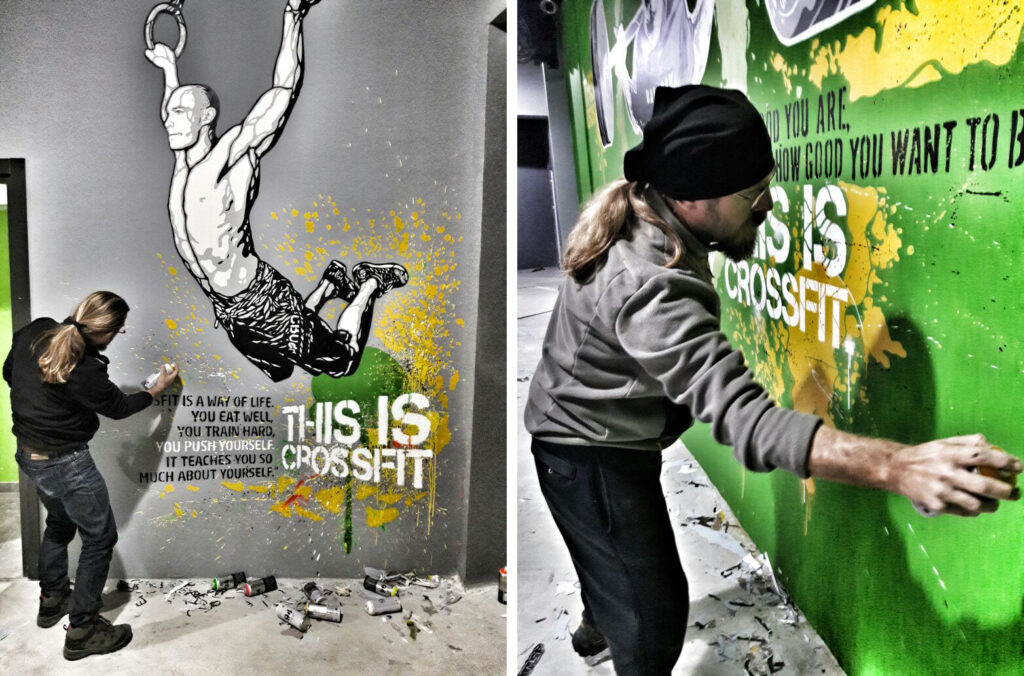
Do you think art education is merely about technical knowledge and skills, or is it a broader system of thought?
Art education encompasses a multifaceted system that includes critical thinking, intuition, research methods, historical awareness, and even ethical responsibility. It is not limited to just technical knowledge and skills. Of course, technical subjects such as drawing, material knowledge, form, composition, or color are important, and in these aspects, art carries a craft discipline. However, the true strength of art education lies in its ability to instill a creative way of thinking beyond the technical.
“Art education is not just a training in skills; it is a process of gaining intellectual, aesthetic, and ethical competence.”
Art education does not simply answer the question of “how to do it.” Otherwise, art would be reduced to merely producing shapes. In contrast, art education is not just a training in skills; it is a process of gaining intellectual, aesthetic, and ethical competence. In art education, the student becomes a thinking, observing, and transforming figure.
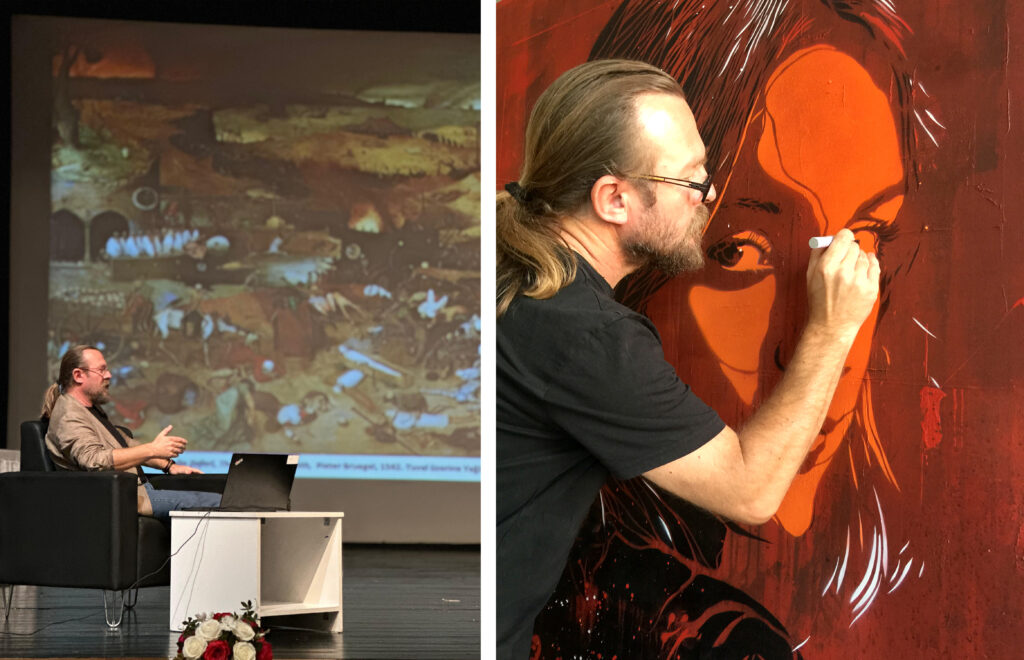
What is the idea, project, or artistic approach that excites you the most right now?
Certainly, the Cyprus Museum of Modern Arts! Museums are among the most important educational spaces that nations use to pass down their cultures to future generations. They help you recognize and respect your history, national values, and cultural identity. Moreover, they provide societies with moral and spiritual strength and historical superiority. Art museums contribute not only to art but also to art history through the tracing, dating, preservation, and restoration of various works. An art museum is the most significant resource to consult when writing the history of art. Therefore, it would not be wrong to think that modern art museums and their collections will serve as references in the writing of contemporary art history.
“I believe the Cyprus Museum of Modern Arts will become a hub for national and international exchange.”
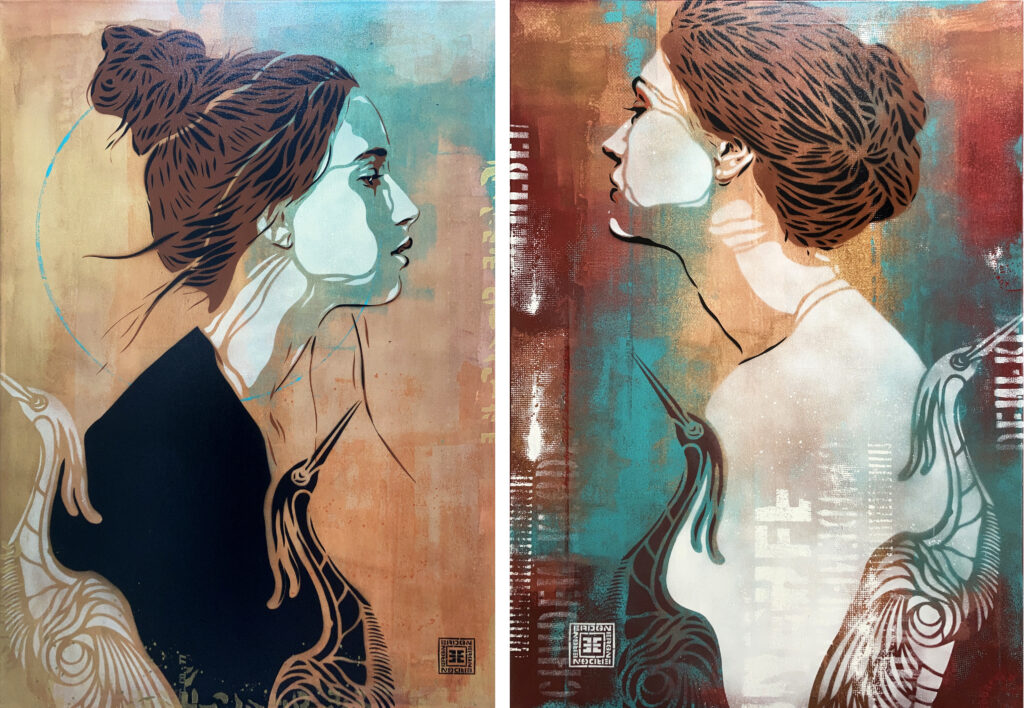
1. Erdoğan Ergün, Stencil, 150×70 cm, acyrilic and apray on canvas, 2021; 2. Erdoğan Ergün, Stencil, 150×70 cm, acyrilic and apray on canvas, 2021
In line with these ideas, we began our work in 2017 under the leadership of our Founding Rector Dr. Suat İrfan Günsel. We have hosted thousands of artists from both Turkey and abroad (especially from Turkic states) on our campus. As a result of all the art workshops, initiatives, and exhibitions held so far, we have established six museums. The current project, the Cyprus Museum of Modern Arts, will be opening to visitors very soon. I believe it will become an effective institution of public education and a hub for national and international exchange.
About Prof. Erdoğan Ergün
Prof. Erdoğan Ergün was born in Ankara in 1972. He completed his undergraduate, graduate, and proficiency in art studies at Hacettepe University Faculty of Fine Arts, Department of Graphic Arts. In 2006, he joined Near East University Faculty of Fine Arts and Design as a lecturer and continued his academic and artistic career. He later received the titles of assistant professor, associate professor, and full professor at the same institution.
Throughout his academic journey, Prof. Ergün served in various administrative and academic roles, including Head of the Department of Graphic Design, Chair of the Art and Design Main Art Branch, Associate Dean, and member of the Graduate School of Educational Sciences Board. He has participated in university-led research projects, served as a jury member in numerous national and international exhibitions, and contributed to organizing a wide range of academic and artistic events. He has held solo exhibitions and participated in many group exhibitions at home and abroad. He has also contributed as an invited artist in national and international workshops.